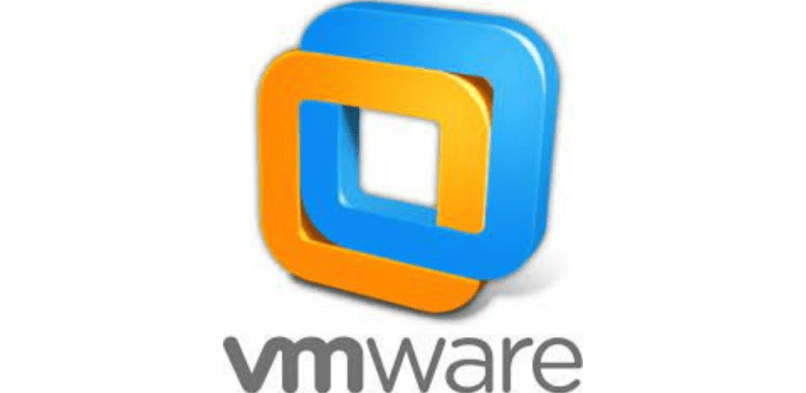VMware Courses

VMware Courses
July 13, 2024 No Comments on VMware CoursesVMware Courses.
VMware Training
All in all VMware software drives a lot of companies’ cloud computing and virtualization initiatives, which makes learning VMware software key for a number of technologist roles, particularly network engineers and some kinds of software developers.
- VMware vSphere: Install, Configure, Manage [V8] 40 hours.
- VMware PKS. 10 hours.
- VMware Tanzu Fundamentals. 10 hours.
- VMware vSphere: Install, Configure, Manage [V7] 40 hours.
What is VMware?
All in all VMware, Inc. is an American cloud computing and virtualization technology company with headquarters in Palo Alto, California. VMware was the first commercially successful company to virtualize the x86 architecture. VMware’s desktop software runs on Microsoft Windows, Linux, and macOS.
Overview of the VMware Courses
Simply put, VMware develops virtualization software. Virtualization software creates an abstraction layer over computer hardware that allows the hardware elements of a single computer— processors, memory, storage, and more— to be divided into multiple virtual computers, commonly called virtual machines (VMs).
Part-Time
Fast forward your career in the IT industry with a part-time course at School of IT. In turn Part-time courses allow working professionals to transition into a new skill set while working. Thus at School of IT we are agile and customize a course to the individual. Flexibility.
Full Time
Ready to start a career in IT? Learn the vmware environment as a full time student at School of IT. Thus beginning your career in development.
High School
Learn about cloud and prepare for your future while you’re still in high school. Thus no matter where you are, we give you the basics to pursue your dreams.
Corporate
Up skill your company and yourself while you’re working. Thus no matter where you are, we give the tools to move up in your company.
1 Course Introduction 2 Introduction to vSphere and the Software-Defined Data Center 3 Virtual Machines 4 vCenter Server 5 Configuring and Managing Virtual Networks 6 Configuring and Managing Virtual Storage 7 Virtual Machine Management 8 Resource Management and Monitoring 9 vSphere Clusters 10 vSphere Lifecycle Management Course Outline
• Introductions and course logistics
• Course objectives
• Explain basic virtualization concepts
• Describe how vSphere fits into the software-defined data center and the cloud infrastructure
• Explain how vSphere interacts with CPUs, memory, networks, and storage
• Recognize the user interfaces for accessing the vCenter Server system and ESXi hosts
• Describe the ESXi host architecture
• Navigate the Direct Console User Interface (DCUI) to configure an ESXi host
• Recognize ESXi host user account best practices
• Install an ESXi host
• Use VMware Host Client™ to configure ESXi host settings
• Describe how to proactively manage your vSphere environment using VMware Skyline
• Create and provision a virtual machine
• Explain the importance of VMware Tools™
• Install VMware Tools
• Identify the files that make up a VM
• Recognize the components of a VM
• Recognize virtual devices supported by a VM
• Describe the benefits and use cases for containers
• Identify the parts of a container system
• Describe the vCenter Server architecture
• Discuss how ESXi hosts communicate with vCenter Server
• Deploy and configure vCenter Server Appliance
• Use vSphere Client to manage the vCenter Server inventory
• Add data center, organizational objects, and hosts to vCenter Server
• Use roles and permissions to enable users to access objects in the vCenter Server inventory
• Back up vCenter Server Appliance
• Monitor vCenter Server tasks, events, and appliance health
• Use VMware vCenter Server® High Availability to protect a vCenter Server Appliance
• Create and manage standard switches
• Describe the virtual switch connection types
• Configure virtual switch security, traffic-shaping, and load-balancing policies
• Compare vSphere distributed switches and standard switches
• Identify storage protocols and storage device types
• Discuss ESXi hosts using iSCSI, NFS, and Fibre Channel storage
• Create and manage VMFS and NFS datastores
• Explain how multipathing works with iSCSI, NFS, and Fibre Channel storage
• Recognize the components of a VMware vSAN™ configuration
• Use templates and cloning to deploy new virtual machines
• Modify and manage virtual machines
• Create a content library and deploy virtual machines from templates in the library
• Use customization specification files to customize a new virtual machine
• Perform vSphere vMotion and vSphere Storage vMotion migrations
• Describe the Enhanced vMotion Compatibility feature
• Create and manage virtual machine snapshots
• Examine the features and functions of VMware vSphere® Replication™
• Describe the benefits of VMware vSphere® Storage APIs – Data Protection
• Discuss CPU and memory concepts in a virtualized environment
• Describe what overcommitment of a resource means
• Describe methods for optimizing CPU and memory usage
• Use various tools to monitor resource use
• Create and use alarms to report certain conditions or events
• Describe the functions of a vSphere DRS cluster
• Create a vSphere DRS cluster
• Monitor a vSphere cluster configuration
• Describe options for making a vSphere environment highly available
• Explain the vSphere HA architecture
• Configure and manage a vSphere HA cluster
• Examine the features and functions of VMware vSphere® Fault Tolerance
• Describe the function of the vSphere® Cluster Service
• Recognize the importance of vCenter Server Update Planner
• Describe how VMware vSphere® Lifecycle Manager™ works
• Describe how to update ESXi hosts using baselines
• Validate ESXi host compliance using a cluster image
• Describe how to upgrade VMware Tools and VM hardware
• Describe VMware vSphere® Lifecycle Manager™ and VMware vSAN™ integration
Requirements
This course has the following prerequisites:
• System administration experience on Microsoft Windows or Linux operating systems
1 Course Introduction • Introductions and course logistics • Course objectives 2 vSphere and Virtualization Overview • Explain basic virtualization concepts • Describe how vSphere fits in the software-defined data center and the cloud infrastructure • Recognize the user interfaces for accessing vSphere • Explain how vSphere interacts with CPUs, memory, networks, storage, and GPUs 3 Installing and Configuring ESXi • Install an ESXi host • Recognize ESXi user account best practices • Configure the ESXi host settings using the DCUI and VMware Host Client 4 Deploying and Configuring vCenter • Recognize ESXi hosts communication with vCenter • Deploy vCenter Server Appliance • Configure vCenter settings • Use the vSphere Client to add and manage license keys • Create and organize vCenter inventory objects • Recognize the rules for applying vCenter permissions • View vCenter logs and events 5 Configuring vSphere Networking • Configure and view standard switch configurations • Configure and view distributed switch configurations • Recognize the difference between standard switches and distributed switches • Explain how to set networking policies on standard and distributed switches 6 Configuring vSphere Storage • Recognize vSphere storage technologies • Identify types of vSphere datastores • Describe Fibre Channel components and addressing • Describe iSCSI components and addressing • Configure iSCSI storage on ESXi • Create and manage VMFS datastores • Configure and manage NFS datastores 7 Deploying Virtual Machines • Create and provision VMs • Explain the importance of VMware Tools • Identify the files that make up a VM • Recognize the components of a VM • Navigate the vSphere Client and examine VM settings and options • Modify VMs by dynamically increasing resources • Create VM templates and deploy VMs from them • Clone VMs • Create customization specifications for guest operating systems • Create local, published, and subscribed content libraries • Deploy VMs from content libraries • Manage multiple versions of VM templates in content libraries 8 Managing Virtual Machines • Recognize the types of VM migrations that you can perform within a vCenter instance and across vCenter instances • Migrate VMs using vSphere vMotion • Describe the role of Enhanced vMotion Compatibility in migrations • Migrate VMs using vSphere Storage vMotion • Take a snapshot of a VM • Manage, consolidate, and delete snapshots • Describe CPU and memory concepts in relation to a virtualized environment • Describe how VMs compete for resources • Define CPU and memory shares, reservations, and limits 9 Deploying and Configuring vSphere Clusters • Create a vSphere cluster enabled for vSphere DRS and vSphere HA • View information about a vSphere cluster • Explain how vSphere DRS determines VM placement on hosts in the cluster • Recognize use cases for vSphere DRS settings • Monitor a vSphere DRS cluster • Describe how vSphere HA responds to various types of failures • Identify options for configuring network redundancy in a vSphere HA cluster • Recognize vSphere HA design considerations • Recognize the use cases for various vSphere HA settings • Configure a vSphere HA cluster • Recognize when to use vSphere Fault Tolerance 10 Managing the vSphere Lifecycle • Enable vSphere Lifecycle Manager in a vSphere cluster • Describe features of the vCenter Update Planner • Run vCenter upgrade prechecks and interoperability reports • Recognize features of VMware vSphere® Lifecycle Manager™ • Distinguish between managing hosts using baselines and managing hosts using images • Describe how to update hosts using baselines • Describe ESXi images • Validate ESXi host compliance against a cluster image and update ESXi hosts • Update ESXi hosts using vSphere Lifecycle Manager • Describe vSphere Lifecycle Manager automatic recommendations • Use vSphere Lifecycle Manager to upgrade VMware Tools and VM hardware Course Outline
Requirements
This course has the following prerequisites:
• System administration experience on Microsoft Windows or Linux operating systems
Introduction Overview of VMware PKS Features and Architecture Installing PKS Components and Tools Configuring NSX-T Networking Deploying with Ops Manager and BOSH Setting up the PKS Control Plane Using K8S Cluster as an Operator Integrating with VMWare Harbor Maintaining and Monitoring PKS for Operators Course Outline
Requirements
- An understanding of Kubernetes
- Experience with cloud computing concepts
Audience
- System administrators
- System engineers
- Developers
Introduction Getting Started Provisioning a Cluster with Kubernetes Grid Managing Kubernetes Clusters Course Outline
Requirements
- An understanding of cloud computing
- Experience with Kubernetes
Audience
- DevOps engineers
- Developers
The career prospects for programmers are excellent and high in demand. Coding is everywhere: on all platforms and devices and in all countries around the world!
- Junior Programmer.
- Developer.
- DevOps Engineer.
- Cloud Architect.
- Software Engineer.
- Google App Developer.
- Systems Architect.

